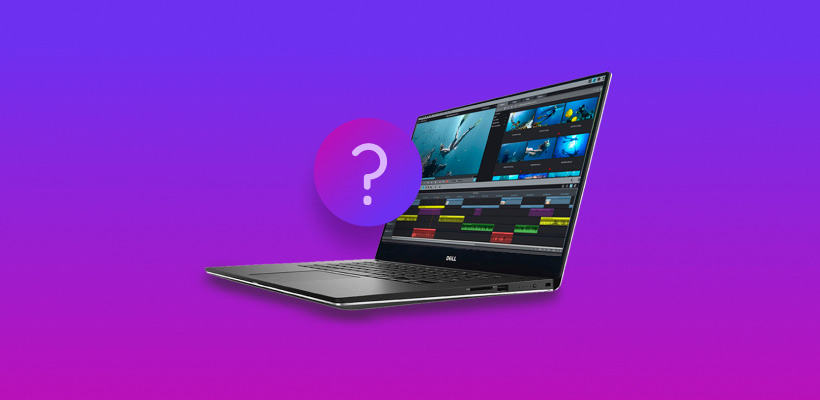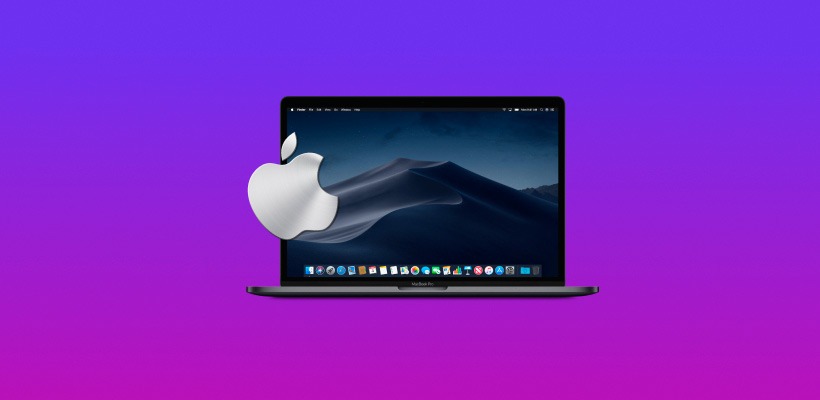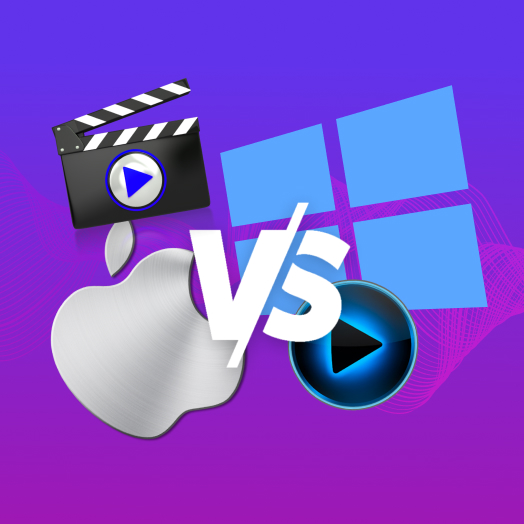Table of Contents
Video content is the best thing you can add to a blog, website, or social media page right now. If you want to achieve maximum exposure levels, you must edit what you’ve shot to make it usable to the average viewer.
That means you’ll need a computer with an operating system powerful enough for video editing in 2024.
Why Do We Debate the Best Operating System for Video Editing?

The popular approach to the Mac vs. PC debate for video editing was that Apple products are better for creative needs.
When your focus is on productivity, you’d want to use a PC instead.
This debate developed in the 1980s when IBM wanted to compete with Apple for space in the home computing market.
After the company partnered with Microsoft, the goal was to show that Apple products were expensive and elitist. If you wanted a down-to-earth approach to home computing, you’d need to choose their alternative.
This perspective continued through the 1990s and 2000s for many people. It is only now, with Microsoft offering touchscreen graphic creation support, video editing tools, and content productivity apps, that this gap is closing.
Apple is also catching up with PCs in the productivity area. You can find numerous processors, presentation tools, and office admin apps that let you work quickly and efficiently.
What to Consider When Choosing the Best OS for Video Editing

If you have entry-level video editing work to do, a Mac is almost always better than a PC out of the box.
When you get your Mac set up, you can load iMovie, transfer your files, and get to work within an hour for most people.
If you have a PC, you must set up Windows, find the program you want to use, and go through the installation process a second time.
The lines get blurrier when you compare the high-end computers to find the best OS for video editing.
Here’s a comparison example of two premier platforms that video editors can use in 2024.
- 16-inch Liquid Retina XDR display.
- 16-core CPU with 12 performance cores and 4 efficiency cores.
- 48GB unified memory.
- 30 to 40-core GPU (comparable to Nvidia 3050-3060 performance).
- 1 TB SSD File Storage.
- MSRP: $3,499-3,999.
- 18″ 240 Hz QHD+
- Intel Core i9-13950HX.
- 32 GB 5600 MHz RAM.
- GeForce RTX 4080.
- 1 TB SSD File Storage.
- MSRP: $3,799.99.
If you choose the PC, you’ve already maxed out the potential upgrades for your video editing work. When you select the MacBook Pro to meet your needs, you can push your storage up to 8 TB while staying within the same price range as the Windows alternative.
You can also double the DDR4 RAM on the MacBook Pro.
The Apple design offers a six-stereo sound system that incorporates studio-quality microphones for clean recordings and dramatic sounds. That means you can narrate a voiceover during your editing work without an extensive complementary peripheral investment.
When you look at the PC alternative, the touchscreen is more advantageous for gaming than video editing.
That’s only one example of many. Here are some of the different parameters you might need to review before deciding if Mac or PC for video editing is the best choice.
Hardware-Related Parameters to Review
Your hardware quality dictates how fast you get through each step of the video editing process. When you have two CPUs working side-by-side, and one of them operates faster, you’ll get through your work quicker.
Speed isn’t the only comparison point. The amount of memory and type you have on a Mac or PC also controls how fast you can manage your editing work.
That means you must maximize your RAM, storage availability, and CPU power to achieve the best results. When you review the Mac vs. PC debate parameters, it’s usually the Apple design that comes out ahead.
Macs and PCs both use SSD as the standard option today, which means you get the fastest file access possible. If you buy an older model, you might need to separate that hardware choice from HDD.
Although you can theoretically upgrade or build a personal computer with a Windows operating system to be better, you’re almost always going to spend more than you would with an Apple computer.
Software-Related Parameters to Review
All video editing software and apps use hardware parameters to determine how quickly and efficiently you can produce results. It’s a workflow that incorporates these steps.
- The software reads the video footage from where you have the file located.
- It uses the codecs necessary to make the video readable and editable by the software.
- Any effects necessary for the process get applied, including trimming and color gradients.
- Real-time playback gets organized by storing the information into the computer’s memory.
- Rendering work happens to your designated codec.
- You get to write the edited video onto your storage device, internal or external, as a new file or updated version of the previous one.
When you start shopping for the right video editing software to meet your needs, the first step of that process is to match its requirements to your hardware capabilities.
If your software choice is at or above the maximum specs your hardware supports, you won’t have a positive experience with your setup.
Since iMovie already comes with Mac computers, you can avoid that entire issue entirely when investing in macOS. You’ll need to compare carefully when deciding to go with a PC.
Once you have the software you want, getting your video into the computer becomes the next problem to solve.
Most digital cameras and camcorders have removable media cards or an internal storage device that requires a connection to your computer. Your equipment will dictate which option works best, especially if you have older recording products.
Since Macs use Thunderbolt ports almost exclusively, an adapter might be necessary to pull information from your device. Although a PC offers a direct connection, it’ll likely be slower than the Apple’s file transfer speeds
Today’s camcorders are smart, recognizing which cable and port you’re using to adjust the file transfer rates accordingly.
Reasons to Use a Mac for Video Editing

Mac computers became popular in the 2000s for video editing because of their larger screens and faster speeds compared to PCs. There wasn’t a Windows computer (outside of custom builds) that could compete at the time.
That’s why computer laps from 1985-2000 often featured some version of an Apple computer. It was the best way to offer teaching options.
It is not unusual to see iMovie-edited videos online still today because of how easy the tool is to use.
If you’re thinking about an iMac, MacBook, or Mac Mini for your video editing, here are some of the advantages that could come your way.
Better 4K Connections
Apple might be taking away some USB ports, but it is happening for a good cause. Websites and applications are using 4K content now more than ever, and that means file sizes are increasing exponentially.
You won’t get a better option for large-scale video editing than the Thunderbolt 2 peripheral cable in 2020. If you’re on a MacBook Pro, you can achieve data transmission rates with this setup as high as 40 Gbps.
You won’t come anywhere close to that on PC. With the latest USB designs, your video editing file transfers tap out at only 5 Gbps.
Less System Variability
If you work within the Apple ecosystem, you know what to expect from each device. That makes your video editing work much more consistent. With Microsoft leasing Windows to over a dozen different manufacturers, you never know what you’re going to get.
That means your iMovie files at your home computer will function the same way at work on your MacBook Pro. When you travel, access iCloud with your MacBook Air to keep editing.
It’s one of the most convenient, flexible, and forgiving mediums you can find today for video editing work.
Smoother Work Transitions
Apple designed macOS to offer smooth application integrations. This benefit ensures that your workflow remains consistent across all platforms. When you include the advantages that new features and updates provide, it becomes effortless for anyone to learn how to edit videos.
Most entry-level Mac users start video editing work on iMovie. It comes with the computer, which means you don’t need to worry about lousy freeware, sneaky bloatware, or buying a premium package.
You can set up your Mac, transfer your files, and get to work immediately.
Fonts and Colors
In the Mac vs. PC video editing debate, Apple still gives macOS an advantage with font availability and color presentation.
Although some PCs have touchscreen compatibility, you can get the same outcome with an iPad that works with your computer in the Apple ecosystem.
Macs provide font standardization, which is a benefit most PCs except the top-end ones don’t offer. You also get colorization standards with Apple products, making it much easier to produce consistent video publications.
Updated Style and Convenience
Video editing requires you to be in a specific energy state. If you aren’t feeling creative, the work won’t progress as rapidly.
When you use macOS to accomplish your video editing work, you’re using a computer that maximizes convenience to artists of any skill. Apple continuously updates its systems’ style and usability to make them as easy to learn as possible.
That means you can spend less time worrying about maximizing your hardware specs because macOS often does the work for you.
Additional Reasons Why Macs Are Better Than PCs
- Seamless Integration. You can hand-off the work on a Mac to other macOS or iOS devices. That benefit provides more flexibility when you need to work from multiple locations.
- Security. Macs receive fewer attacks per-capita each year than PCs from hackers, viruses, ransomware, bloatware, malware, spyware, and similar problems. It’s the safest platform to use for your video editing work.
- Build Quality. You receive a guaranteed outcome when you purchase a Mac computer. Although the cost is more than the average entry-level or mid-range PC, the quality levels are at a higher standard. That’s why Apple products have such a good resale value.
- Component Optimization. Apple uses proprietary methodologies to ensure your Mac stays up to date. When you choose a PC, you’re stuck working with multiple vendors. For one video editing solution, you might need to troubleshoot software, hardware, and product. On Mac, you can follow a single channel.
- Screen Quality. The Retina displays and True Tone technology give Apple a decided advantage over PCs for video editing.
- Customer Support. If something goes wrong after your purchase, AppleCare can help you manage the situation for up to 90 days without a hassle. You can extend the benefits for up to three years.
Reasons to Use a Windows PC for Video Editing

A Windows PC provides versatility and productive assistance with almost universal support. These computers are everywhere, which means you can edit videos with precision practically anywhere you happen to go.
If you’re thinking about a PC for video editing, here are the advantages that could come your way with such an investment.
PCs Are Cheaper Than Macs
The entry-level cost for a Mac computer to edit videos is about $1,000. You can pick up a high-quality PC for nearly half that price.
Although this advantage decreases when you need high-powered video editing tools (pro versions of both operating systems retail for approximately $5,000), you’ll spend less on intermediate or beginning needs.
You’ll get the features you want while having enough money left in the bank for a couple of upgrades if they become necessary.
You Have More Compatibility
Unless you run an emulator, macOS systems are compatible with Apple developments only. Although you can find video editing tools that work for both platforms, it often costs more to buy the macOS option.
Apple patents their processes to keep everything internalized whenever possible. Since Microsoft effectively franchises Windows, you have more choices available to use.
That means you can avoid the cookie-cutter processes that come out of Final Cut Pro for beginners by using tools like Pinnacle Studio or Corel VideoStudio.
Access to Upgrades
When you purchase a Mac, you’re getting what Apple decided was the best system for you. Even when you include all potential options across iMac, MacBook, and Mac Mini, you can count the choices on a single hand at times.
Some Mac computers have upgrading capabilities for memory and storage, but that isn’t available for all models (such as the Late 2015 iMacs).
When you buy a PC, your upgrades are readily available. You can often do the work yourself to update hardware, while the software options for video editing continue to eliminate bugs and glitches.
PCs Have Additional Ports
Apple is reducing access to ports with recent models, including the complete elimination of USB options in the MacBook Air. That means macOS users are often stuck purchasing adapters or upgrading their equipment to import video files.
With a PC, you typically get USB, USB-C, and HDMI options to use, along with SD card slots for camera and camcorder compatibility.
Additional Reasons to Choose a PC Over a Mac
- User Versatility. You can finish your video editing work and transition to gaming, administrative duties, web design, and more. Macs sometimes struggle here, especially when you want to play a AAA video game.
- Customization. You can build a PC from scratch. That option isn’t available for macOS.
- Operating System. When you use macOS, almost everything is automated for the user. Windows is a different experience, requiring you to make specific small changes to create a unique outcome. It takes more time to set up, but the work can deliver impressive results.
- Manufacturer Choice. If you want to use a Mac, you’re forced to work with Apple. PC users can choose from numerous manufacturers to find the right video editing hardware and software setup to meet their needs.
- RAM Requirements. Windows provides a virtual memory benefit that prevents most crashes. If a Mac starts running low on RAM availability, it is more likely to stop working as expected.
- Freemium/Shareware/Freeware. Apple-compatible downloads represent about 10% of the current video editing marketplace. Although Linux has a small percentage, the bulk of it belongs to Windows.
FAQ
Many users might prefer a Mac over a PC for video editing for several reasons:
- Ecosystem and Integration: Apple’s ecosystem offers seamless integration between devices, making it easier to transfer files and work across different Apple products.
- Software Optimization: Software like Final Cut Pro is optimized for macOS, providing a smooth and efficient editing experience.
- Reliability and Stability: Macs are known for their stable operating system and less frequent need for troubleshooting, which can be crucial for time-sensitive video editing projects.
- Build Quality and Design: Apple’s focus on design and build quality ensures that Macs are not only aesthetically pleasing but also durable.
- Resale Value: Macs generally maintain their value better than PCs, making them a good long-term investment.
It’s important to consider your specific needs, preferences, and budget when choosing between a Mac and a PC for video editing.
Conclusion: Which OS Is Better for Video Editing?
The best way to decide the Mac vs. PC debate for video editing is to look at your specific needs.


